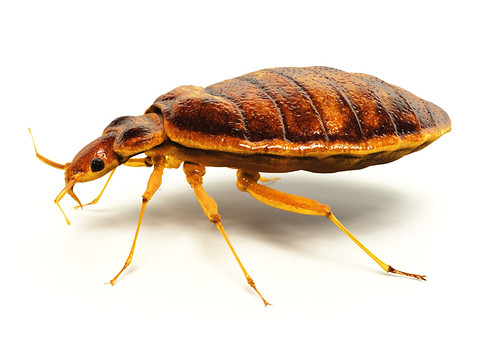
This post is part of the Science Tuesday feature series on the USDA blog. Check back each week as we showcase stories and news from USDA’s rich science and research portfolio.
Most are familiar with the phase, “Sleep tight, don’t let the bed bugs bite,” but few people know what a bed bug looks like or problems they can cause. From World War II until just recently, bed bugs were not at all common in the United States. Bed bugs are now found in many homes, apartments, college dorm rooms, and even in public facilities such as theaters, hospitals, schools, and libraries. Now that bed bugs are back, everyone needs to know how to recognize them, how they move from one location to the next, and where they hide so we can prevent large infestations.
The good news is that bed bugs do not transmit disease, but they are a health concern. Bed bugs can cause extreme discomfort in some people and severe itchy rashes from their bites. They tend to hide in cracks and crevices within 8 feet of beds or on furniture where people frequently sit. Bed bugs come out of their hiding places at night and feed on the blood of whomever is sleeping on the bed. If this cycle continues and they lay eggs, they can build up large populations that are hard to control even with modern insecticides.
Representatives from USDA’s National Institute of Food and Agriculture (NIFA), the U.S. Environmental Protection Agency, and Centers for Diseases Control provide information about bed bugs and the steps you can take to avoid them. The redesigned website, “Don’t Let the Bed Bugs Bite” provides science-based information on how to protect yourself and your home from bed bugs. Many of the resources on the website are from bed bug experts at land-grant universities and federal agencies.
Another excellent resource is the StopPests in Housing program from the Northeastern Integrated Pest Management (IPM) Center, which receives support from the U.S. Department of Housing and Urban Development's Office of Healthy Homes and Lead Hazard Control through a NIFA grant. You can hear a recent webinar on bed bugs, review questions and answers, and get more information on the StopPests Bed Bug Resource Page.
Taking a few minutes to look at these websites and learn about bed bugs—travel tips, protecting your home and family from infestation, and getting rid of them should they become unwelcome house guests – may help you have pleasant holiday travel.
Through federal funding and leadership for research, education, and extension programs, NIFA focuses on investing in science and solving critical issues impacting people's daily lives and the nation's future. For more information, visit www.nifa.usda.gov.
